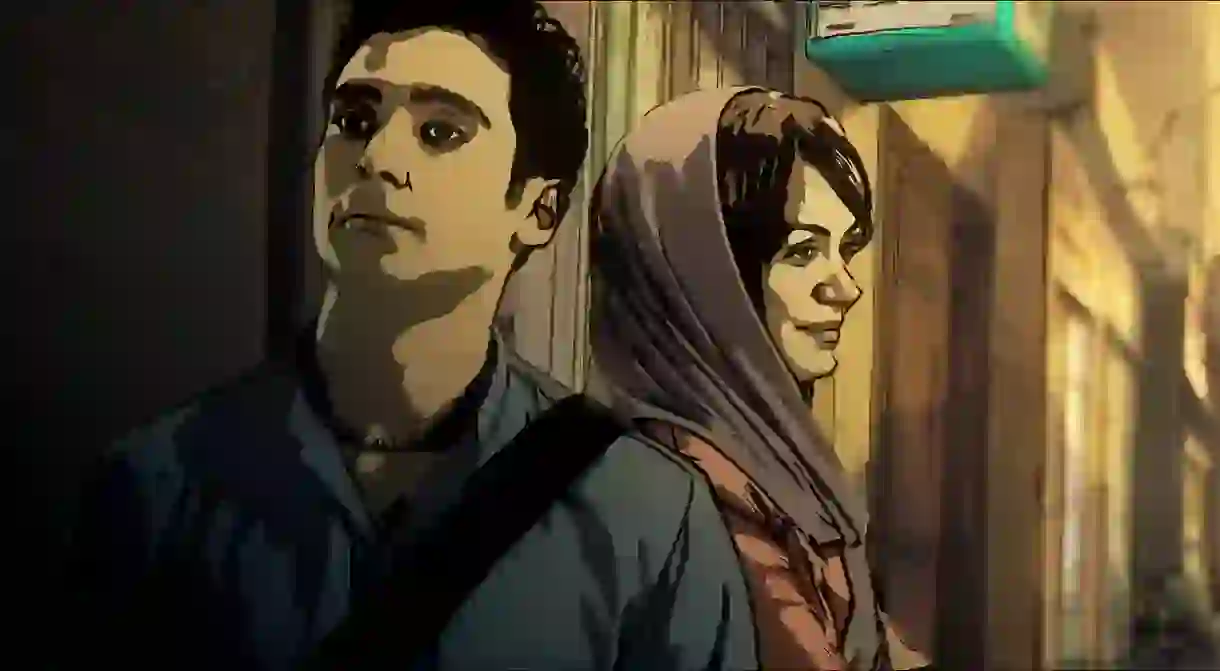‘Tehran Taboo’ Brings Modern Iran to Life With Unflinching Style

Ali Soozandeh delivers a controversial look at the country of his birth with his debut feature, Tehran Taboo. The first-time director speaks about his inaugural film and why animation was the key to perfecting the project.

Tehran Taboo opens with a mother and her young son seated in the back of a car driven by a man who becomes irate when he sees one of his children with a member of the opposite sex on the street. The driver is in the process of paying the woman in his car for sex, but he is completely oblivious to the double standard. From this opening scene the audience is left in little doubt that the occasionally contradictory nature of Tehran’s society will be exposed by debut director and child of the city Ali Soozandeh.
“I was born and raised in Iran,” Soozandeh says, while reflecting on where his idea for the film originated. “When I think about my past time, I wonder why there are so many limitations in society and how they change life and shape our character. Writing the script was perhaps an attempt to find answers to these questions.”
You might also like: How the Iranian Horror Film ‘Under the Shadow’ Scared a Bunch of Critics
Pari, the woman at the centre of the film, is a sex worker struggling to make ends meet after the break-up of her marriage. She moves into a new apartment block and befriends a middle-class woman who seemingly has the perfect life. Their relationship intertwines with the life of a young musician who is left in a desperate situation when a one-night stand announces that she is pregnant with his baby. As the director puts it: “All characters suffer from the restrictions and limitations of society.”
The film is rotoscoped, meaning that actors were filmed and then subsequently animated over. “The biggest advantage of rotoscopy is the actors’ approach. The real actors bring emotion to the animation and make the result much more acceptable to the adult audience,” says Soozandeh.

The filmmaking technique has been used before, and animation has become a popular medium for directors when depicting the region. Persepolis (2007) was one other such film, but Tehran Taboo was an original idea and not a graphic novel. So why was this film made in this format?
“It was not my intention to make an animated film,” the director explains. “But it was always clear that we couldn’t shoot the film in Iran. Because of the censorship. One of the alternatives was animation.”
Earlier this year, Asghar Farhadi, another Iranian filmmaker, opened the prestigious Cannes Film Festival with Everybody Knows. The movie-making industry in the country continues apace, despite the authorities’ continuing to clamp down on productions in Iran itself. Soozandeh explains how some of these restrictions are actually fostering creativity. “I think that because of censorship, artists are not free to express their opinions and try to work around restrictions. They create new ways of expressing themselves. And it makes them creative. I don’t want to say that the artist needs restriction to be creative. There are many artists who give up and go down.”
You might also like: How Angelina Jolie Produced a Devastating Animation About Life Under the Taliban
Tehran is a character in the film too, and we see all aspects of the city in Soozandeh’s film.
“Tehran is a metropolis with more than 15 million [people]. A city full of contrasts. The difference between rich and poor, modern and traditional life, is so huge. In the north of Tehran there are very modern districts. In the south, people live more religiously and traditionally. In the countryside it is much different than in big cities. The story of the film takes place in a corner of Tehran, where you can find such people and themes. It was not my intention to describe the whole society and to show all the facades of the city.”

Soozandeh remains unsurprisingly matter-of-fact when talking about the reaction to the film in Iran itself. “I have received some positive feedback from young people from Iran. But I don’t think people with traditional and conservative backgrounds will like the film.”
Having left Iran a number of years ago, Soozandeh still feels a connection to the people and the place he depicts in Tehran Taboo. Its an understanding that grew even stronger, he tells us, while he worked on the film.
“Iran is a part of my life. A part of my character. Part of my memory. But when I started writing the script, I started to understand society better. I realized how complex society is. Nobody is an absolute victim or perpetrator. Depending on the situation and point of view, the same person can be victim and perpetrator at the same time. The people there are not different from people all over the world. They have the same dreams and needs as anywhere in the world.”
Tehran Taboo is on general release now













